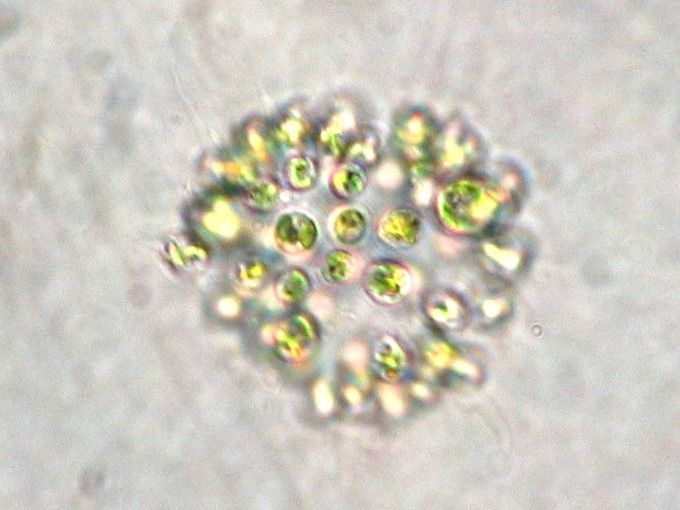Background
Bacteria Overview
Bacteria are incredibly small organisms that exist as single cells and are present in almost every environment on the planet. They play essential roles in various ecosystems, including the human body, where they form a complex community known as the microbiome. This diverse array of bacteria influences human health in numerous ways, and disruptions in this delicate balance can lead to health problems. Therefore, understanding their implicated communications is crucial for disease prevention and treatment.
Amerigo Scientific provides high-quality bacterial antibody products to aid global customers’ research on bacterial diseases. Our comprehensive range of antibodies enables scientists to investigate bacterial infections, develop diagnostic tools, and discover new treatments. By offering reliable solutions, Amerigo Scientific supports groundbreaking research addressing global health challenges.
 Fig.1 The communication between commensal bacteria and host.1
Fig.1 The communication between commensal bacteria and host.1
Common Types of Bacteria
Clostridium Botulinum
Clostridium botulinum (C. botulinum) is a gram-positive bacteria that produces botulinum toxin (neurotoxin), leading to severe paralysis (botulism) in humans and animals. C. botulinum is associated with different forms of botulism including foodborne botulism from consuming contaminated food, infant botulism caused by intestinal infection with toxin-producing C. botulinum, and wound botulism resulting from the infection of a wound with this bacterium.
Escherichia Coli
Escherichia coli (E. coli) is a bacterium that naturally resides in the intestinal tract of humans and animals. Although the majority of E. coli strains are benign, certain types can lead to serious health issues. Certain pathogenic serotypes of E. coli even cause more serious foodborne illnesses. Its rapid growth and easy genetic manipulation make E. coli a preferred choice for producing recombinant proteins used in therapeutic applications.
Helicobacter Pylori
Helicobacter pylori (H. pylori) is a widespread bacterium that inhabits the stomach lining and triggers the development of gastritis and peptic ulcers. It disrupts the stomach's protective mucus layer, increasing vulnerability to acid damage and inflammation. H. pylori can be transmitted through oral contact, vomit, or bodily fluids. Risk factors for infection include age and race or ethnicity.
Microcystis Aeruginosa
Microcystis aeruginosa (M. aeruginosa) is a prevalent species of cyanobacteria typically found in freshwater ecosystems. These cyanobacteria tend to develop colonies consisting of single-celled organisms, which produce harmful toxins that pose health risks to humans and animals who come into contact with contaminated water. Blooms of M. aeruginosa occur when nutrient levels in the water are high, creating ideal conditions for the bacteria to thrive. These blooms can be detrimental to the ecosystem and can negatively impact the water quality in affected areas.
Staphylococcus Aureus
Staphylococcus aureus (S. aureus) is a frequent bacterium present in the upper respiratory system and on the skin's surface. Although it generally coexists peacefully within the body, it has the potential to lead to infections if it penetrates the bloodstream or enters through cuts and abrasions. S. aureus is known for its ability to produce toxins and evade the immune system, making it a leading cause of skin infections, respiratory infections, and food poisoning. This bacterium is particularly problematic in medical environments because of its ability to resist numerous antibiotics.
Bacteria Staining
Bacteria are tiny, colorless, and transparent, so staining is often used to observe their size and morphological structure. The following are several commonly used bacterial staining methods:
- Gram staining: This is a double staining method that uses crystal violet and carbolic acid fuchsin for staining. Bacteria can be categorized based on the characteristics of their cell walls into two groups: Gram-positive bacteria, which stain purple, and Gram-negative bacteria, which stain red.
- Simple staining: This method uses a single dye to stain and is primarily used to highlight bacterial morphology, including shape, size, and arrangement.
- Special structure staining: This method is used to observe the special structures of bacteria such as flagella, capsules, spores, etc.
- Negative staining: This method employs the color difference between the bacteria themselves and the background after staining to examine the bacterial capsule as well as roughly distinguish the number of dead bacteria and live bacteria. Usually, it is used in combination with fluorescent staining.
- Fluorescent staining: This method involves staining bacteria with a fluorescent dye to visualize their morphological structure under a fluorescence microscope. Frequently utilized alongside negative staining techniques, this method allows for a detailed examination of bacterial characteristics.
As an industry leader in antibody development, Amerigo Scientific always adheres to high standards and good quality to develop and produce antibodies. As a result of this, our bacteria related antibody products are widely appreciated for their exceptional accuracy and specificity. Don't hesitate to get in touch with us for additional information about our bacteria-related antibody products.
Reference
- Martín, Rebeca, et al. "Role of commensal and probiotic bacteria in human health: a focus on inflammatory bowel disease." Microbial cell factories 12 (2013): 1-11. Distributed under Open Access license CC BY 2.0, without modification.


 Fig.1 The communication between commensal bacteria and host.1
Fig.1 The communication between commensal bacteria and host.1






